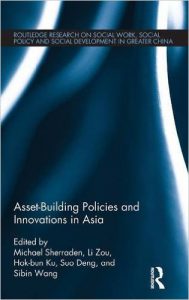Book Publications
Book Title:
 By Chia Ngee Choon (2016). Straits Times Press and Institute of Policy Studies (one of 50 books to commemorate Singapore’s 50th year anniversary).
By Chia Ngee Choon (2016). Straits Times Press and Institute of Policy Studies (one of 50 books to commemorate Singapore’s 50th year anniversary).
Since its inception in 1953, the mandatory savings scheme, under the Central Provident Fund (CPF) system, has evolved to meet Singaporean's housing aspirations and retirement needs as Singapore transformed from Third World to First. The story of the CPF is a story of economic history and social development in Singapore. CPF policies are aligned to national objectives - economic growth, macroeconomic stability, asset building and savings for health and retirement. Particularly, its intricate connection to housing financing has made Singapore's social protection system a unique social innovation among the international community. With an aging population, CPF polices will continue to be tweaked to stay relevant to the retirement needs and concerns of CPF members. As the choice architect, the CPF Board needs to anticipate behavioural responses and manage expectations of its members.
Book Title:
 Asia has long been a testing ground for efforts to augment financial and social security by developing assets that may support individuals and households and contribute to long-term social development. Rapid growth in the number and breadth of asset-based social policies has prompted Asian scholars, practitioners, and policymakers to share lessons from current efforts and chart future directions.
Asia has long been a testing ground for efforts to augment financial and social security by developing assets that may support individuals and households and contribute to long-term social development. Rapid growth in the number and breadth of asset-based social policies has prompted Asian scholars, practitioners, and policymakers to share lessons from current efforts and chart future directions.
This book offers a unique collection of macro- and micro-level analyses on asset-based social development and compares and contrasts national social policies across the Asia Pacific region. Many asset-building policies and programmes have been undertaken in Asia, and innovative proposals continue to emerge. The contributions in this book present and assess this broad, often nuanced, and evolving landscape, and offer an insightful analysis of the evolution of asset-building policies, innovative programmes in rural populations, asset-based interventions to facilitate the development and well-being of children, as well as case studies on new, ground-breaking asset-building projects.
Asset-Building Policies and Innovation in Asia will be an invaluable resource for students and scholars of Asian social policy, social welfare, social development and social work.
 With today's availability of Social Security and Medicare, we typically think of the older years as a stage in life where people are supported financially. However, of the more than 40 million old adults currently living in the US, many are struggling financially living below or near the poverty line. They are lacking the assets necessary to see them through a period of life that is often longer than expected and that requires more health and long-term care. While financial vulnerability can be most pronounced in old age, it is often created across decades, revealing itself in later years when there is little opportunity to reverse a lifetime of disadvantage. The concept of Financial Capability refers to both an individual and structural idea that combines a person's ability to act with their opportunity to act in their best financial interests.
With today's availability of Social Security and Medicare, we typically think of the older years as a stage in life where people are supported financially. However, of the more than 40 million old adults currently living in the US, many are struggling financially living below or near the poverty line. They are lacking the assets necessary to see them through a period of life that is often longer than expected and that requires more health and long-term care. While financial vulnerability can be most pronounced in old age, it is often created across decades, revealing itself in later years when there is little opportunity to reverse a lifetime of disadvantage. The concept of Financial Capability refers to both an individual and structural idea that combines a person's ability to act with their opportunity to act in their best financial interests.
In Financial Capability and Asset Holding in Later Life: A Life Course Perspective the concept of Financial Capability is used to underscore the importance of acquiring knowledge and skills while addressing policies and services than can build financial security.
The volume assembles the latest evidence on financial capability and assets among older adults using a life course perspective, arguing that older adults need financial knowledge and financial services in order to build secure lives, and that this process needs to begin before it is too late to make effective changes and choices.
Broken into three parts, the book's chapters – written by leading experts in the field – blend together empirical findings, economic and social theory, and case studies. Part 1 opens the book with a conceptual and empirical overview of financial capability and assets among older adults using a life course perspective. Part 2 presents chapters addressing financial vulnerability of diverse racial and ethnic groups, people with disabilities, and immigrants. Part 3 includes chapters describing current policies, programs, and innovations, including a review of important issues of working and caregiving in later life, and a detailed assessment ofbage-friendly banking principles, banking products, services, and policies.
